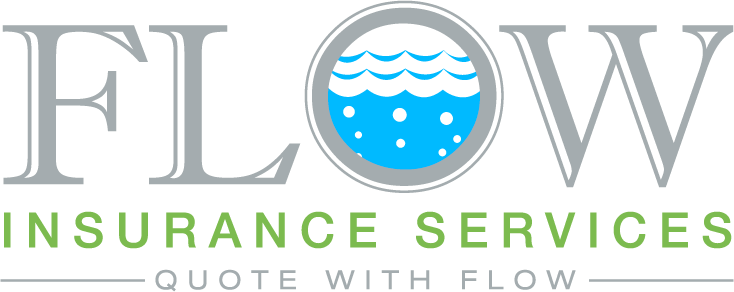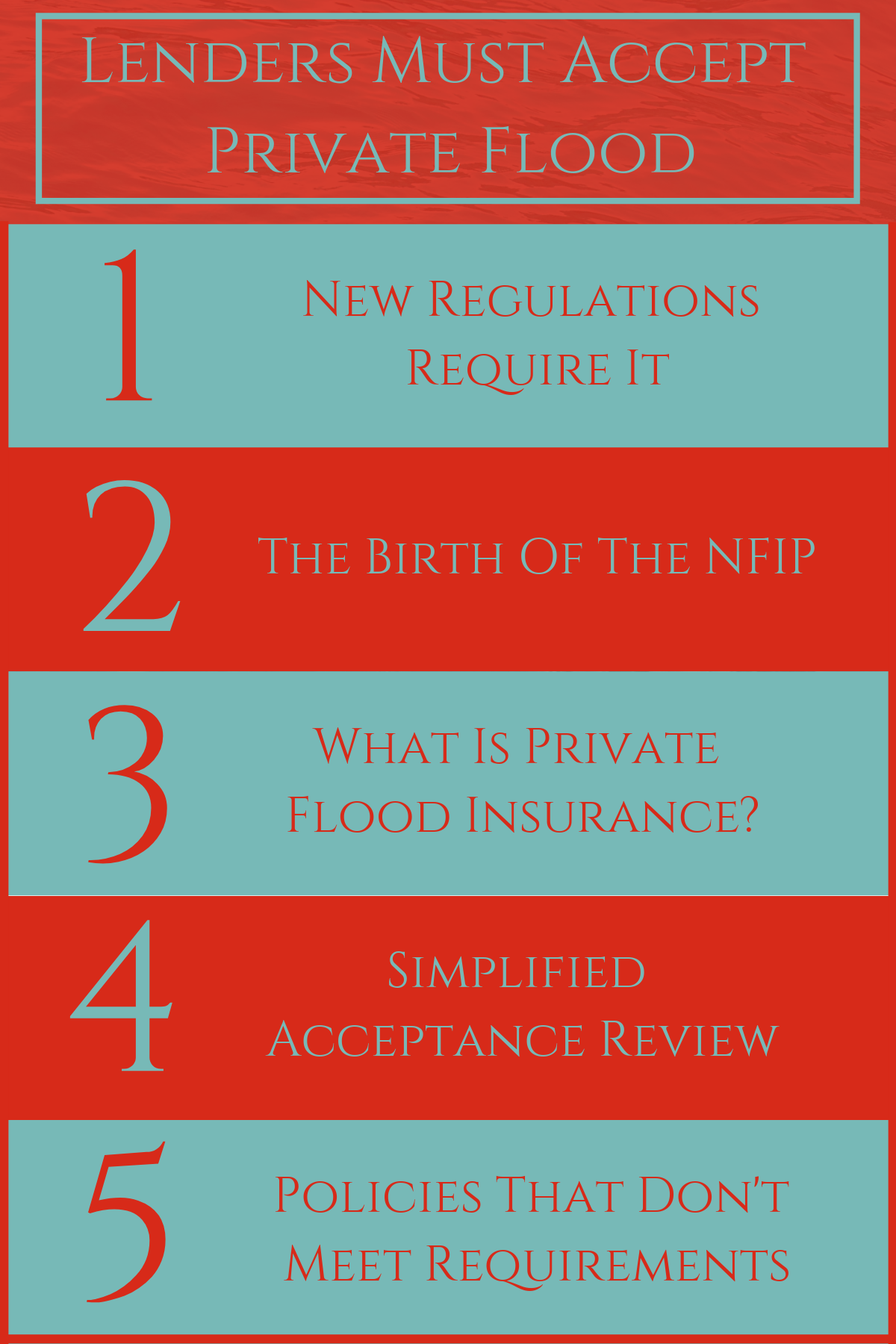07 Mar Lenders Must Accept Private Flood Insurance

855-368-5502
Lenders Must Accept Private Flood
By: Adam M. Matheny
New Regulations Require It
The Office of the Comptroller, the Board of Governors of the Federal Reserve System, the Federal Deposit Insurance Corporation, the National Credit Union Association, and the Farm Credit Administration announced the release of new regulations concerning the acceptance of private flood insurance by regulated lenders. This would be instead of the current National Flood Insurance Program managed by the federal government and providing the private flood insurance policy meets all standards under the Biggert-Waters Act of 2012.
Lenders will be permitted to accept polices without going over them line by line, if the policy documents state the contents meet all aspects of the Biggert-Waters Act. Finally, lenders can accept policies that don’t meet the statues providing they are comfortable that it offers sufficient protection and they are willing to document this fact and that they under certain conditions can accept coverage offered by “mutual aid societies.” These new regulations go into effect on the 1st of July 2019.
The Birth of the National Flood Insurance Program
The National Flood Insurance Program (NFIP) was created with the passage of the National Flood Insurance Act of 1968 and the Flood Disaster Protection Act of 1973. The idea behind these acts was to give property owners with property in specified flood-prone areas the opportunity to buy flood insurance. Keep in mind most types of homeowner’s insurance do not cover floods.
Under the NFIP, those whose mortgage comes from a regulated lender must buy flood insurance if the property lies in a designated flood zone. Each of the agencies mentioned above has regulations in place enforcing this requirement. Those who fail to do so will face consequences that can include significant fines.
Under the original Biggert-Wade Act of 2012, the acceptance of private flood insurance was mandated, including the requirement for regulated lenders to ensure it was purchased by the borrower. But it was only in February of 2019 that the regulations were finalized.

What Is Private Flood Insurance?
In order to meet the standards established under the Biggert-Wade Act, private flood insurance must:
- Issued by an insurance carrier who is licensed to operate in the state in which the property is located or is a recognized surplus lines insurance provider according to that state’s insurance regulator.
- Offer coverage that is at the minimum equivalent to that provided by the NFIP for a similar property. This must include all exclusions, deductibles, and any other items.
- Private flood insurance must also contain specified clauses like those found in the NFIP and must include information regarding the availability of the NFIP.
It must also have a requirement that 45 days’ notice is given to both the borrower and the lender regarding the policy being canceled.
Simplified Acceptance Review
In some case, the lending institution may not have access to the full policy before closing or may not have the required skill to review it thoroughly. To make things a little simpler and encourage the acceptance of private flood insurance, the lenders can accept policies that state, “This policy meets the definition of private flood insurance contained in 42 U.S.C. 4012a(b)(7) and the corresponding regulation.” in some form or another within the policy. Not having this on the paperwork does not mean that lenders do not have to accept private flood insurance as they must accept any policy that meets the standards.
What About Policies That Don’t Meet the Requirements?
According to the final rule, lenders may accept private flood insurance even if does not meet the requirements if:
- Coverage is at least enough to cover the principal balance on the loan or pays out the maximum amount allowable for the type of property in question.
- The policy is issued by an insurance company who is licensed in the same state as the property is located or is a recognized surplus lines insurance provider by the state insurance regulatory board.
- Provides coverage for the lender and the borrower, unless it is a condo or comparable group where the premium is paid by the group rather than an individual.
- The policy meets all standard general safety and soundness concerns and provides adequate loan protection.
Under this final rule, lenders are permitted to accept policies issued by certain mutual aid societies even though they do not meet the requirements established by the agencies listed above. A mutual aid society is described as an organization:
- Where the members share a common religious, educational, fraternal, or charitable bond.
- Where the coverage extends to all loses experienced by members who share this bond.
- Can demonstrate a proven track record of covering members’ losses.
In the end, it is up to the lenders’ supervisory board to determine if they are willing to accept private flood insurance that doesn’t meet the statutory requirement or coverage provided by mutual aid societies.

